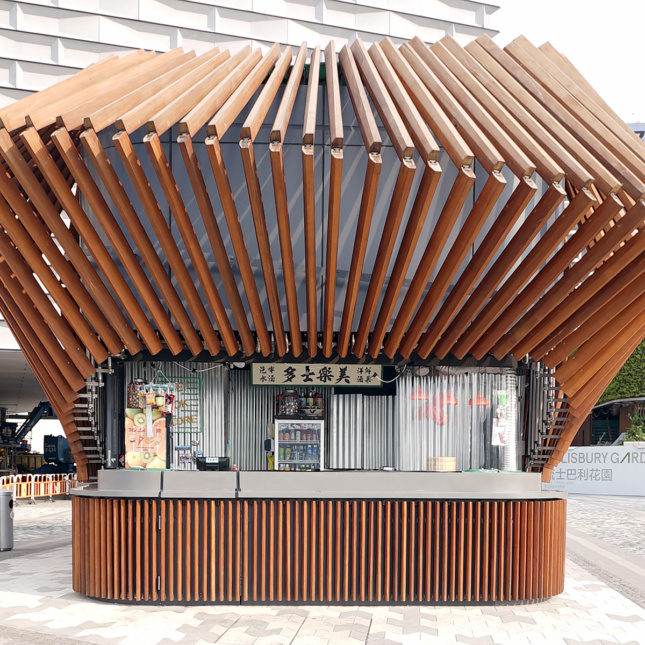Hong Kong-based firm LAAB Architects has realized the robotic Harbour Kiosk along the Avenue of the Stars, a stretch of the city designed as a tribute to Hong Kongese cinema, on the Tsim Sha Tsui waterfront. Originally asked to create a 108-square-foot food kiosk, the architects instead opted to combine the kiosk with a nearby mechanical room. The new 56-foot stretch allowed LAAB to pack in even more functions to the Harbour Kiosk, including a counter, planters, info panels, and drinking fountains.

To develop the Harbour Kiosk, LAAB spent four years prototyping and optimizing parametric designs. They didn’t just have to create a structure that could not only accommodate the kiosk’s various uses—including housing equipment for the entire Avenue of Stars—but that would be strong enough to withstand typhoon season.

But perhaps what stands out most is the kiosk’s moving facade. Inspired by local market stalls, red balau timber fins open to grow the kiosk’s size during the day, and close to make it more compact at night. More radically, however, the exterior undulates throughout the day thanks to 49 robotic armatures, which move systematically to mimic the waves in the harbor and help “to establish an emotional connection between the people, the architecture, and the surrounding natural environment,” according to the LAAB team. It was designed to “transform the local street into a kinetic and cinematic scene” in honor of “the action movies that Hong Kong is famous for.”


